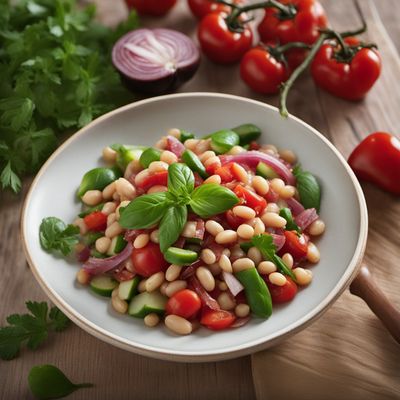
Ingredient
Canned tunas and similar
The Versatile Canned Tuna
Canned tunas and similar ingredients, such as canned salmon and sardines, are cooked and preserved in cans, making them a convenient pantry staple. They have a firm texture and a mild, savory flavor that pairs well with various ingredients. Canned tunas are typically flaky and can be easily incorporated into salads, pasta dishes, or used as a filling for sandwiches or wraps.
Origins and history
Canned tunas and similar ingredients have a long history dating back to the early 19th century when the canning process was developed. The invention of canning revolutionized the preservation of food, allowing ingredients like tuna to be enjoyed year-round. Canned tunas are commonly associated with Mediterranean cuisines, particularly in countries like Spain and Italy.
Nutritional information
Canned tunas and similar ingredients are a good source of lean protein, omega-3 fatty acids, and various vitamins and minerals. They are low in calories and fat, making them a healthy addition to balanced meals.
Allergens
Fish
How to select
When selecting canned tunas and similar ingredients, look for cans that are free from dents, bulges, or leaks. Check the expiration date to ensure freshness. Opt for brands that use sustainable fishing practices and offer products packed in olive oil or water rather than heavy sauces or oils.
Storage recommendations
To maintain the quality of canned tunas and similar ingredients, store them in a cool, dry place away from direct sunlight. Once opened, transfer any unused portion to an airtight container and refrigerate for up to 2 days.
How to produce
Canned tunas and similar ingredients are commercially produced, but amateur fishermen can catch fresh tuna and preserve it in cans at home using proper canning techniques.
Preparation tips
Canned tunas and similar ingredients can be enjoyed straight from the can, added to salads, pasta dishes, or used as a filling for sandwiches, wraps, or sushi rolls. They can also be mixed with mayonnaise, herbs, and spices to create flavorful tuna salads or spreads.
Substitutions
Canned salmon, sardines, or cooked chicken can be used as substitutes for canned tunas in recipes. However, the flavor and texture may vary slightly.
Culinary uses
Canned tunas and similar ingredients are commonly used in salads, sandwiches, pasta dishes, and sushi rolls. They are also popular in Mediterranean cuisines, where they are often incorporated into dishes like pasta puttanesca or niçoise salad.
Availability
Canned tunas and similar ingredients are widely available in grocery stores and supermarkets worldwide.
More ingredients from this category
Recipes using Canned tunas and similar » Browse all

Grilled Tuna with Coconut Lime Sauce
Tropical Delight: Grilled Tuna with Niuean Coconut Lime Sauce

Venetian-style Tuna with Tomato and Capers
Delizie del Mare: Venetian Tuna Delight

Nasi Dagang with Spicy Tuna Curry
Malaysian Delight: Fragrant Nasi Dagang with Spicy Tuna Curry

Mughlai-style Spiced Tuna Curry
Royal Tuna Delight: A Mughlai Twist on Spiced Tuna Curry

Melanesian-inspired Kokoro with Coconut Rice
Tropical Delight: Melanesian Kokoro with Fragrant Coconut Rice

Polish-style Tuna Sandwich
Smoked Tuna Delight: A Polish Twist on a Classic Sandwich

Khbeiza bil Tonn - Lebanese Tuna Omelette
Savory Delight: Lebanese Tuna Omelette with a Twist

Thon Basquaise with a Twist
Savory Delight: A Modern Twist on Thon Basquaise

Insalata di Tonno e Fagioli
Mediterranean Tuna and Bean Salad: A Refreshing Delight

Greek Tuna Salad with Feta and Olives
Mediterranean Delight: Greek Tuna Salad with a Twist

Goshiki-ito Sushi Rolls
Harmony in Every Bite: Goshiki-ito Sushi Rolls

North Karnataka Style Potato and Tuna Salad
Spicy and Tangy Potato-Tuna Delight from North Karnataka